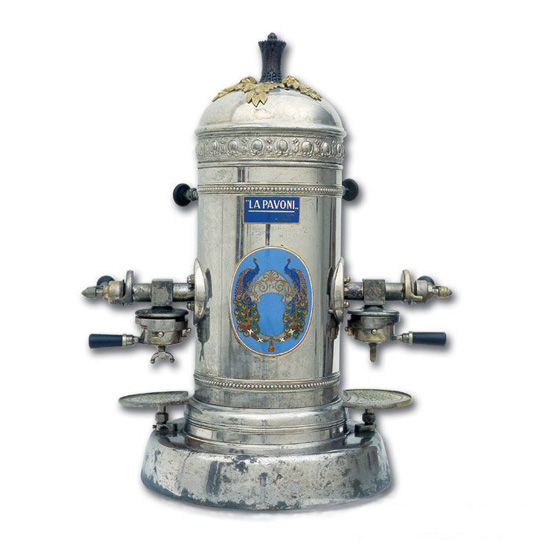History of Espresso Machine: The Ultimate Legacy of 150 Years
For many coffee lovers, it isn’t easy to separate the coffee from espresso. To them, coffee is espresso, and espresso is coffee. Yet espresso is just one kind of coffee. The history of espresso machine started from19th century Europe, espresso was very popular, and that is because of the expansion of the coffee business in the continent. Coffee lovers have to spend several minutes waiting for one cup of joe.

TABLE OF CONTENTS
Espresso Machine
There was the need to improve on the brewing quality, as well as cut down on the time it takes to make them. It led to the manufacture of espresso machines.
Before the invention of the first machine, it takes well over five minutes to brew one cup. If you have many family members to prepare coffee for, it takes several times to achieve that.
The espresso is a technology that processes larger quantities of espresso coffee at reduced time. The primary aim of the technology was to speed the processing time. Since people are on the fast lane, restaurants, and coffee servers, have to look for ways of reducing the waiting time so that customers do not have to wait for a long before they get the cup.
When the History of Espresso Machine Started?
That forced investors across Europe to look for ways of improving on-time by inventing the machine that can facilitate the process. Many of the Italian investors who were the first to delve into espresso machine started to use steam machines in coffee brewing to reduce time.
Steam technology was adopted because that was the steam age. At the time the first acceptable machine was introduced, there were various prototypes and patents available in Europe.
The one which was mostly accepted was the invention by Angelo Moriondo of Turin in Italy. His patent got granted in 1884. The name of the patent was “New steam machinery for the economic and instantaneous confection of coffee beverage.”
The first machine invented by Moriondo consists of a large boiler, and this was heated under 1.5 bars of pressure. This extensive pressure pushed water through the coffee ground large bed. It also includes a second boiler that produces steam that flashes the coffee bed to complete the brewing process.
The machine was right; there was no doubt about that. The coffee industry acknowledges Angelo Moriondo as the pioneer in the manufacture of the revolutionary espresso machines.
There was a massive drawback to the device, and that was the bulkiness. Another problem that phased away the product was branding failure. Hardly could anybody remember that invention again.
Today, it is not easy for anyone to point at any variant of Moriondo machine in any part of the world. Moreover, it is not easy for anybody to point at any photography of this product. If not for the patent the brand has, You can say that the Moriondo brand was utterly forgotten in history because there is no other tangible thing to prove its existence.
The Bezzera Tale of Espresso Machine

Luigi Bezzera and Desiderio Pavoni introduced a new espresso machine in the market. These were based in Milan also in Italy. Luigi Bezzera has the technical know-how about this kind of product.
The production was much improvement to what Moriondo earlier introduced to the industry. There were some innovative features in this new product, such as multiple brew heads, portafilter, and several other innovative features that are associated with it.
This new machine features a boiler that was built into burner chambers, and this contained water. It heats the water and pushes it and steam to the ground coffee.
The mechanism which the water moved through could also perform the function of a heat radiator. One significant achievement is that it can reduce the temperature from 250-degree F to the temperature of 195-degree F, which was more acceptable. This machine was named Et voila, espresso.
The significant achievement with this product is the substantial reduction in coffee making time. It takes a few seconds for a coffee to be processed directly to the coffee cup. The product has a significant drawback, and that was the fact that the heating system was through the open flame. It was challenging to control both temperature and pressure. Furthermore, it was not easy to ensure a consistent shot.
When it comes to coffee brewing, the most crucial issue is consistency. It was absent from this product. There is no doubt that the model is great and a significant improvement, but lack of money made it extremely difficult for the inventor to push forward with the production. He has no idea about expanding or implementing his thoughts, and he has to get someone who knew how to do it in the person of Desiderio Pavoni.
Pavoni Purchased Bezerra’s Invention

Because he did not want his idea to die for lack of funds, Bezerra decided to sell the patent to Pavoni since he has the resources. The first pressure release valve was invented. It was a significant improvement.
It makes for an instant pressure release, the problem of splash all over the barista would no longer be the issue. It was to the credit of Pavoni that the steam wand was equally created. This mechanism makes it possible to gain access to the built-in steam inside the boiler.
Both Pavoni and Bezerra worked hard to improve on the product. The machine was introduced to the world in the year 1906 during the Milan Fair of that year. Soon after that, the man who built that machine started to fade away. Pavoni now has his name in the device and continue to widen it across the continent. The device was also manufactured for commercial purposes from the workshop located in Milan. When the fair ended in 1906, similar espresso machines on the same technology began to appear in Europe.
There is no doubt that this kind of machine was a significant improvement in coffee processing. It can make up to 1000 cups of coffee for one hour. The technology was exclusively on steam. It is also the major drawback to the product because the taste quality is not the best as it is bitter or burnt.
Pavoni, no doubt, dominated the industry for more than a decade. The production was largely regional, even though the production has enjoyed successes in the market. It could not spread to other parts of Italy as it is restricted in denizens Milan and the surrounding areas.
While Pavoni’s product was dominating Milan and the neighboring areas, another product by Pier Teresio Arduino was also penetrating the market. Arduino was spearheading innovation in this area. This new inventor was interested in coffee making technology that was not dependent on steam exclusively.
He had a great idea about this and he wanted to incorporate air pumps and screw pistons to the machine. Though he has great ideas, he was not able to put it into reality. He was a master marketer and a business model. It was his marketing skill when it comes to this kind of product that stands him out in history. There was no doubt that the graphic design he made at that time influenced the state of technology in espresso machines today.
Victoria Arduino and His Espresso Machine
In the 1920s, Arduino penetrated Milan and constructed the largest factory. He did not only serve the need of the local market; his products were moved outside of Milan. This was the first time such products were moved out of Milan. His capability and marketing strategy put him ahead of his competitors at the time. The machine was taken to the rest of Europe. Its limitation included the two bar brewing.
Achille Gaggia
Achille Gaggia introduced another machine also in Milan, and this surpassed the two bar brewing technology, which has dominated the industry. Gaggia contribution was the transformation of the Jules Verne hood ornament using a lever-driven machine to chromed out countertop machine.
This technology came to the market at the end of the second world war. The machines utilize steam pressure inside the boiler, which forces that water to the cylinder. In the cylinder, it was placed under pressure using a spring piston lever. The importance of this is that it obviates massive boilers, and it enhanced water pressure to 8.10 bars from its 1.5.2 bars.
One of the greatest benefits of this machine is the standardization of the espresso size. The lever group cylinder can contain one ounce of water. It limits the espresso volume that comes out of it. The greatest attribute of this new invention was the introduction of crema. This helps in defining the espresso quality.
Early users were not comfortable with the floating bubbling. It was not until Gaggia referred to it as Caffe crème that people now associate that term with coffee quality. Gaggia made history because his ideas and invention paved the way for the emergence of modern and high-quality espresso machines in the market today. Gaggia made history with the introduction of a piston machine.
However, in the 1960s, more innovative brands were introduced to the industry. Faema E61 entered the market, and Ernesto Valente introduced it in the year 1961. The machine shifted the processing method from the manual barista force to a motorized pump. This was able to produce nine atmospheric bars, which were required for espresso brewing. Water comes directly from the plumbing line provided, and the pump draws that water directly.
The machine also comes with a heat exchanger, which ensures that water remains at the ideal temperature for the brewing purpose. This product has lots of technical innovations, and it is smaller in size, and the product is versatile, making it suitable for different brewing purposes. This machine was innovative and it has a significant place in history.
This development is the most singular push that spurred other developments. It also makes it easier to make the machine for more commercial purposes. Over a century, espresso machine started from the rudimentary stage to the present stage you find it today.
Modern components are added to enhance quality. The quality has continued to improve over time and some of the components feature computerized measurements, electrical components as well as portable pneumatics. The design continues to be refined and increase in quality. These machines are also portable.
Desire for Perfection
The aim was to ensure perfection in espresso machine production. For the first time, it was possible to process up to one thousand coffee cups in one hour. There is no doubt that this is a significant improvement.
As the need for improvement arises, there was that need to replace steam with another technology and that led to the emergence of electricity. Such machines now rely on electricity. The implication is that machines are now more compact and they are also more efficient.
The end of the second world war pushed that technology forward, and it was led by a man named Fathers of Espresso, and he is no other than Achille Gaggia. This machine was such successful that it was sold all over the world. There was a need for improved measurement, and that brings about the need for calibration. It was, therefore, calibrated to the right temperature and pressure. This brings about what is known as M results. This includes Macinazione, which uses a grinder as well as Miscela and the mano. The three M ensures that you brew with the correct flavor.
Summary and Conclusion
The revolutionary journey took more than a century to reach the current stage. There has always been the desire for perfection starting from the year 1884 when Angelo Moriondo of Turin in Milan, Italy, commenced with that innovative ideas. The idea then was based on the steam machinery, and this was innovative when it was introduced more than a century ago. The aim was to make it more economical and more massive to serve more people at a time, and reduce waiting time. Moriondo revolutionized the process, but his work was nowhere to be found, so he was lost in history.
The involvement of Luigi Bezzera and later Desiderio Pavoni lead to the significant improvement because they improved on what their predecessor did. When Luigi was unable to fund his invention, he does not want to lose that idea. Instead, he has to bequeath it to another person who has the money. Bezerra collaborated with Pavoni, whom he sold the patent to. For the first time, it was possible to produce the machine for commercial use.




